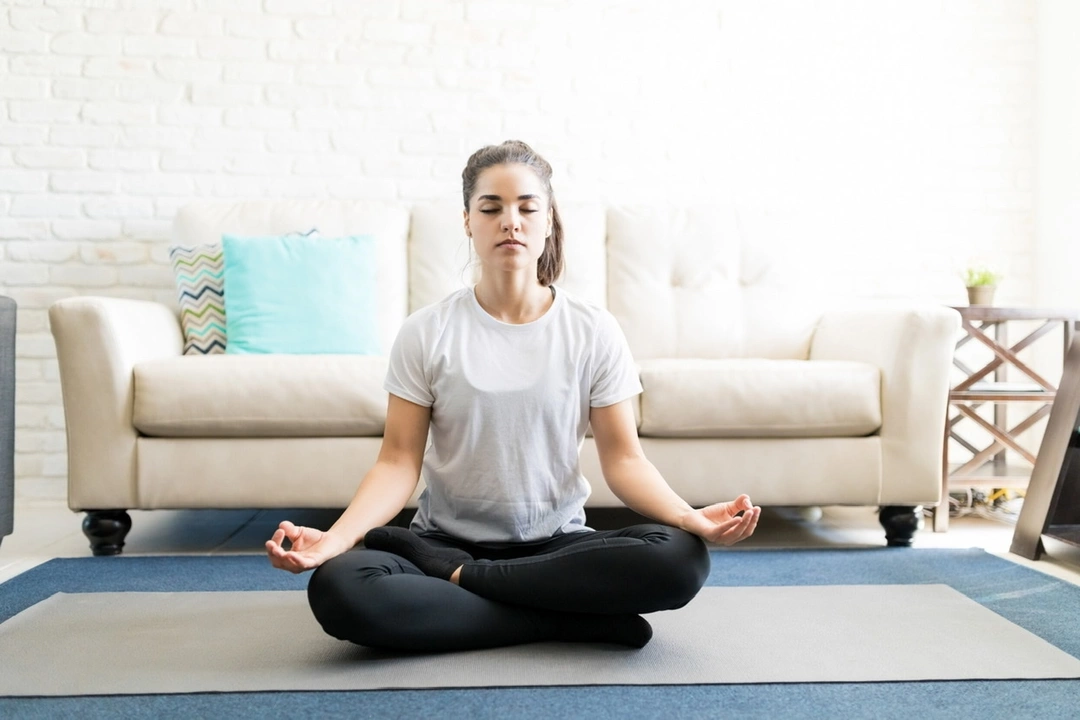Introduction: Embracing Discomfort in Meditation
As someone who has been practicing meditation for quite some time, I've come to embrace the fact that discomfort is an inevitable part of the process. In fact, it is through facing our discomforts head-on that we can truly grow and deepen our practice. In this article, I will share my insights on how to develop a meditation practice that works for you, even when discomfort arises. So, let's dive into the world of discomfort and meditation and see how we can turn our challenges into opportunities for growth.
Understanding the Nature of Discomfort
The first step in developing a meditation practice that works for you is understanding the nature of discomfort. Discomfort can arise in many forms, such as physical pain, mental distractions, or emotional turmoil. It is important to recognize that these discomforts are a natural part of life and that they can provide valuable opportunities for learning and growth. By acknowledging and accepting the discomfort, we can begin to work with it in our meditation practice.
Physical Discomfort
Physical discomfort is a common challenge faced by many meditators, especially those who are new to the practice. Sitting still for extended periods of time can cause stiffness, aching muscles, or even numbness. However, it is important to remember that these sensations are not necessarily a sign of doing something wrong. Instead, they can serve as a reminder to be mindful of our bodies and to make adjustments as needed. Experiment with different sitting positions, cushions, or even try walking meditation to find what works best for you.
Mental Distractions
Mental distractions during meditation can come in many forms, including wandering thoughts, daydreams, or even intrusive memories. It's important to remember that these distractions are a normal part of the meditative process. Rather than trying to suppress or ignore them, we can learn to observe them without judgment and gently bring our focus back to the breath or other chosen meditation object.
Emotional Turmoil
Emotional discomfort can arise during meditation as well, whether it's feelings of sadness, anger, or anxiety. It's important to recognize that these emotions are a natural part of our experience and that they can provide valuable insight into our inner workings. By allowing ourselves to feel these emotions without judgment, we can begin to process and understand them, ultimately leading to greater self-awareness and emotional resilience.
Creating a Comfortable Meditation Space
While discomfort is a natural part of meditation, it's important to create a comfortable and inviting space in which to practice. This can help minimize unnecessary distractions and allow you to focus more fully on your meditation. Consider factors such as lighting, temperature, and noise levels when creating your meditation space. You may also want to include items such as cushions, blankets, or even a meditation bench to support your body during your practice.
Developing a Consistent Meditation Routine
One of the keys to a successful meditation practice is consistency. By committing to a regular meditation schedule, you can create a sense of routine and structure that can help you navigate through moments of discomfort. It doesn't have to be an elaborate routine – even just a few minutes each day can make a significant difference. Choose a time of day that works best for you and try to stick to it as consistently as possible.
Practicing Self-Compassion
Discomfort during meditation can often lead to feelings of frustration or self-judgment. Instead of getting caught up in these negative thoughts, practice self-compassion by reminding yourself that meditation is a journey and that discomfort is a natural part of the process. Be kind to yourself and remember that every moment of discomfort is an opportunity for growth and learning.
Exploring Different Meditation Techniques
There are countless meditation techniques and styles available, and it's important to find one that resonates with you and your unique needs. If you find that a particular method is causing you undue discomfort, don't be afraid to explore other options. Some popular meditation techniques include mindfulness, loving-kindness, body scan, and mantra meditation. Experiment with different methods to see what works best for you.
Seeking Guidance and Support
When facing discomfort in your meditation practice, it can be helpful to seek guidance from experienced practitioners or meditation teachers. They can offer valuable insights and advice on how to work with discomfort and deepen your practice. Additionally, consider joining a local meditation group or online community where you can share your experiences and learn from others who are on a similar journey.
Embracing Discomfort as a Path to Growth
Ultimately, the key to developing a meditation practice that works for you is to embrace discomfort as an opportunity for growth and self-discovery. By acknowledging and working with our discomfort, we can learn valuable lessons about ourselves and cultivate greater self-awareness, resilience, and inner peace. Remember that meditation is a lifelong journey, and every moment of discomfort is a chance to deepen your practice and transform your life.
Conclusion: Finding Your Unique Meditation Path
Discomfort and meditation may seem like an unlikely pairing, but they are actually crucial to our growth and development as meditators. By understanding the nature of discomfort, creating a comfortable meditation space, developing a consistent routine, practicing self-compassion, exploring different techniques, and seeking support, we can create a meditation practice that truly works for us. So embrace the discomfort, and remember that every challenge we face is an opportunity to learn, grow, and deepen our meditation practice.






Tim H
May 29, 2023 AT 02:40Wayne Rendall
May 29, 2023 AT 09:04Ifeoluwa James Falola
May 29, 2023 AT 21:22Richard H. Martin
May 30, 2023 AT 05:48Ramesh Deepan
May 30, 2023 AT 21:12Adam Phillips
May 31, 2023 AT 00:33May Zone skelah
May 31, 2023 AT 20:28Umesh Sukhwani
June 1, 2023 AT 18:34Matt Renner
June 2, 2023 AT 14:43Vishnupriya Srivastava
June 2, 2023 AT 23:00